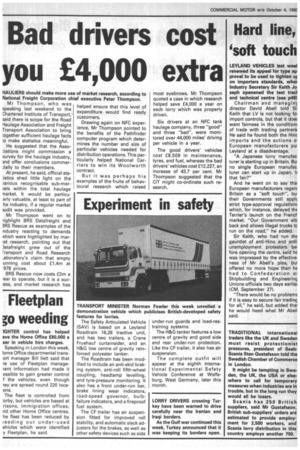Bad drivers cost you £4,000 extra
Page 6

If you've noticed an error in this article please click here to report it so we can fix it.
HAULIERS should make more use of market research, according to National Freight Corporation chief executive Peter Thompson.
Mr Thompson, who was speaking last weekend to the chartered Institute of Transport,said there is scope for the Road Haulage Association and Freight Transport Association to bring :ogether sufficient haulage facts :o make statistics meaningful.
He suggested that the Asso3iations might commission a survey for the haulage industry, md offer conclusions commerially to their members.
At present, he said, official sta:istics shed little light on the rarious recognisable sub-marcets within the total haulage narket. It would be particuarly valuable, at least to part of he industry, if a regular market iudit was provided.
Mr Thompson went on to )ighlight BRS Datafreight and 3RS Rescue as examples of the ndustry reacting to demands vhich were highlighted by mar:et research, pointing out that )atafreight grew out of the ransport and Road Research .aboratory's claim that empty unning cost about £1.4m at 978 prices.
BRS Rescue now costs E2m a rear to operate, but it is a suc;ess, and market research has helped ensure that this level of expenditure would find ready customers.
Drawing again on NEC experience, Mr Thompson pointed to the benefits of the Pathfinder computer program which determines the number and size of particular vehicles needed for distribution operations. This particularly helped National Carriers to win its Woolworth contract.
But it was perhaps his examples of the fruits of behavioural research which raised most eyebrows. Mr Thompson quoted a case in which research helped save £4,000 a year on each lorry which was properly driven.
Six drivers at an NFC tank haulage company, three "good" and three "bad", were monitored over 44,000 miles' driving per vehicle in a year.
The good drivers' vehicles cost £8,509 in maintenance, tyres, and fuel, whereas the bad drivers' vehicles cost £12,227, an increase of 43.7 per cent. Mr Thompson suggested that the CIT might co-ordinate such research.












































































































